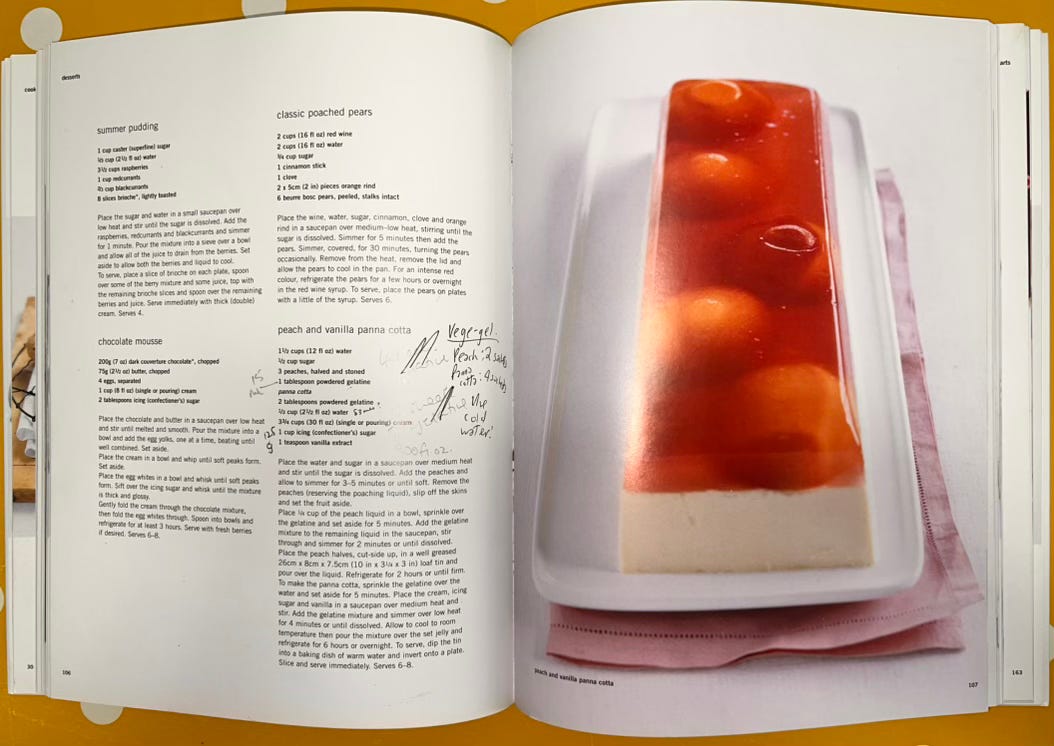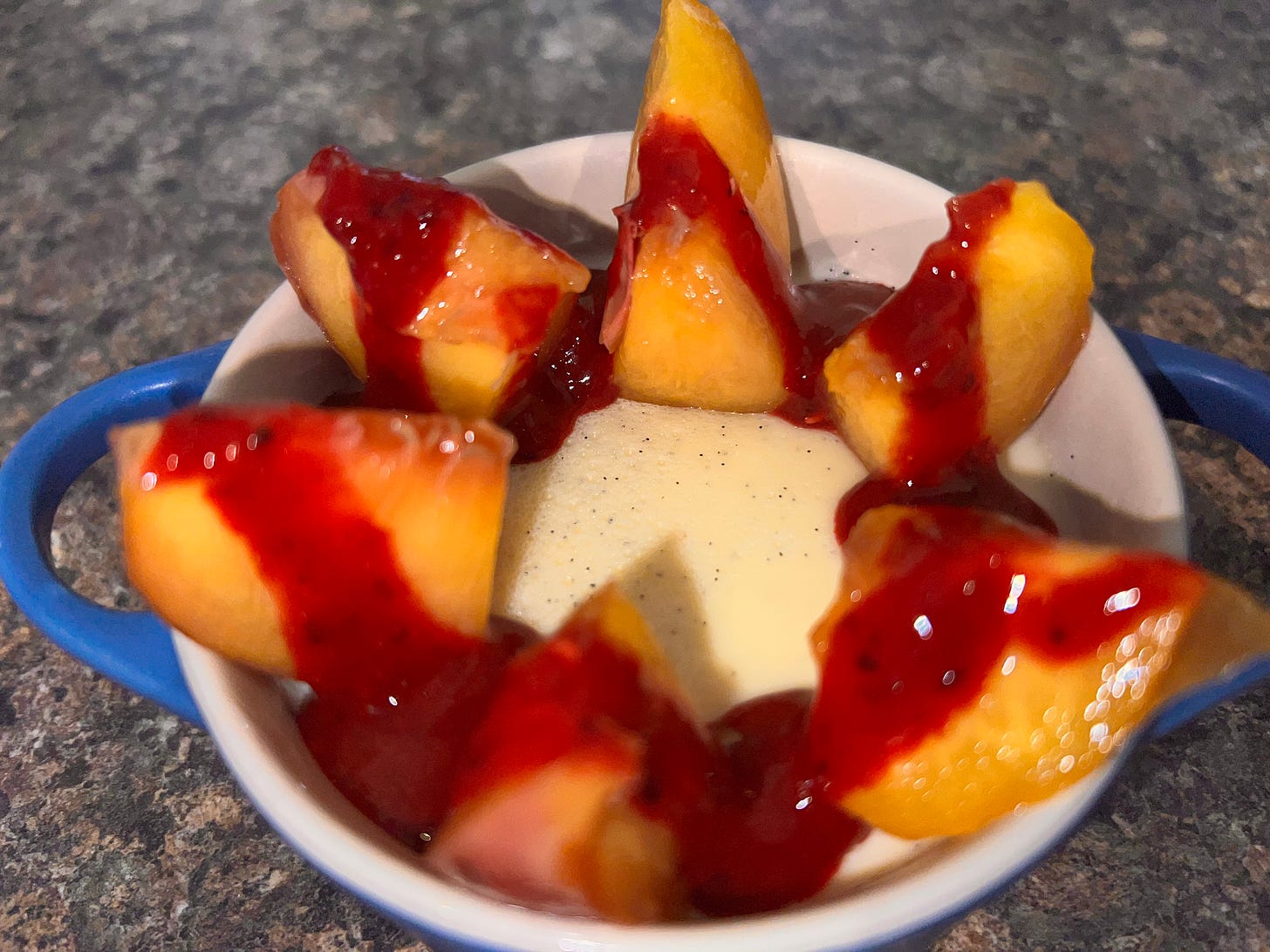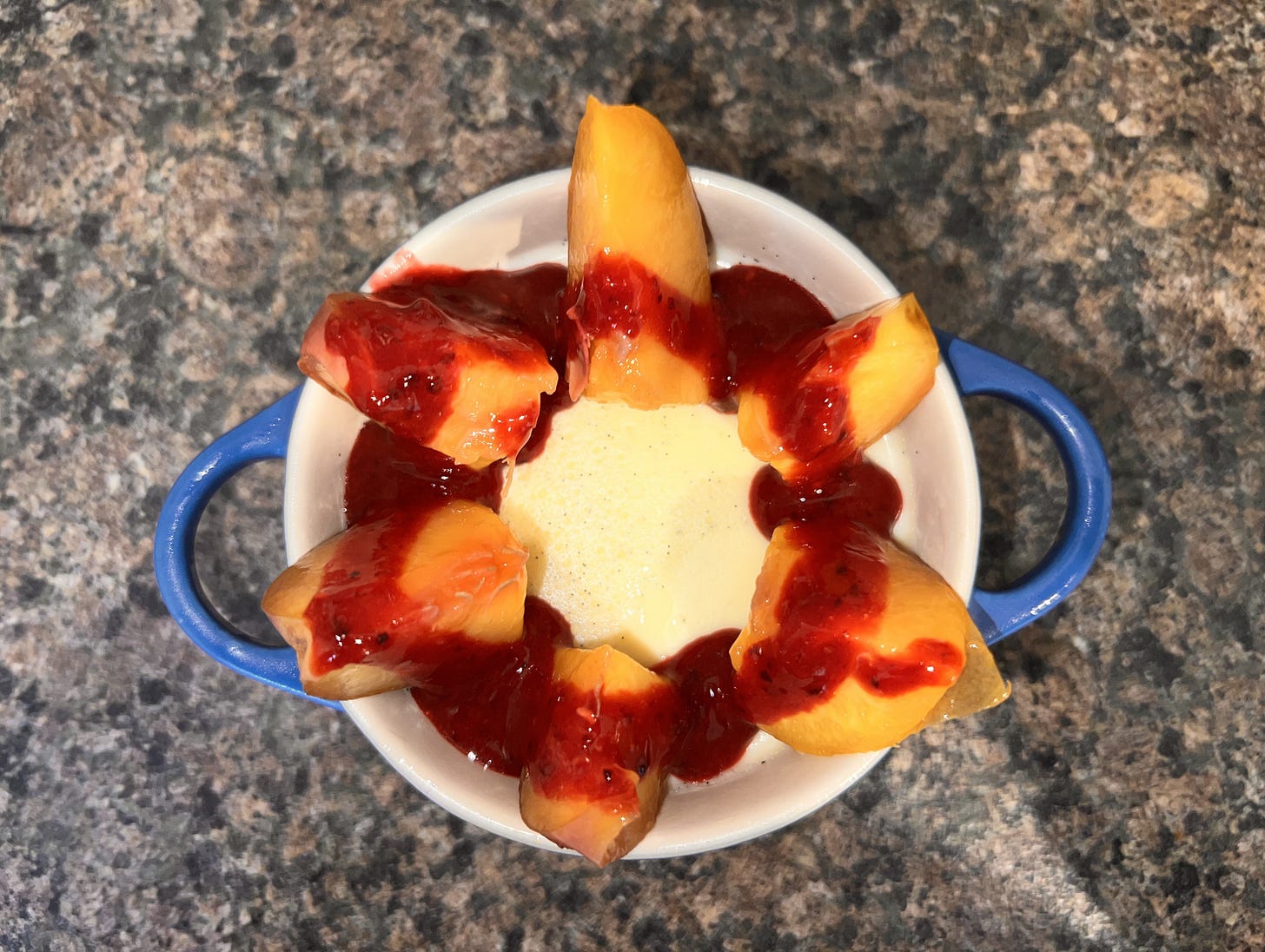Hello and welcome to Not a Vegetarian. I’m Jack Faulkner, and every week I share a different story and recipe from the world of food ever since reviving my love of cooking five years ago.
This series, How I Got into Cooking, is all about my story from nearly burning my house down trying to bake a cake to making poached meringues in crème anglaise with flaked almonds and caramel sauce one night just because I felt like it. Yes, that’s a real thing, and yes, I did actually make it.
But that’s still to come. In the first part, I talked about my nostalgic memories of baking cheese straws with my grandma, the first food I can remember cooking, and in the second part, I talked about starting to cook for myself in the pandemic using recipe kits, including a recipe for speculoos banana bread.
This time, I’m talking about the one thing I could never make, even as my cooking knowledge grew, but if you want to laugh at my failures every week, subscribe to get every new post as they drop!
But before we get onto that, I want to talk a little bit about my old nemesis - vegetarian meat substitutes.
Have a stroll through your local supermarket’s meat aisle and you’ll undoubtably find a wide selection of plant-based meat substitutes. Unless you’ve actually been a vegetarian or ever considered becoming one, you probably haven’t spared them much thought. Well, I’m here to share my unsolicited opinion that they’re awful.
An ultra-processed strip of pea protein will never compete with a rasher of bacon, a lump of soya will never be able to match a juicy steak, and a big wad of jackfruit will never be comparable to a fried fish.
I’m not encouraging you to become an extreme carnivore when I say that - in fact, I don’t like steak or fish - but I just think that there are far better options to choose from when it comes to meat substitutes.
Firstly, I don’t like the word ‘substitute’. Becoming vegetarian shouldn’t be about replacing meat with similar plant-based products - it should be about exploring new foods and finding the ones that you enjoy.
Also, I don’t think that becoming vegetarian means a direct swap between meat and plant-based items. Instead of just swapping beef mince for Quorn, you should explore other options that replace meat but don’t just exist for that reason - think of things like beans, lentils or tofu.
There’s a lot more than steak and bacon when it comes to animal products and lots of everyday foods that you buy every week may actually be unsuitable for vegetarians. You probably know that gelatine is made from animals - mainly the collagen of cows - but did you know that parmesan cheese contains enzymes from a lamb’s stomach? Or that most red or pink-coloured sweets and cakes around the world contain a dye made from crushed beetles?
Not all vegetarians choose to stay clear of these products, but most do, so what you probably consider to be basic meat-free ingredients might actually cause a bit of a headache for vegetarians when cooking.
As always, there’s a wide range of different products and a lot of different pros and cons for each, but one such substitute that I’ve never managed to get along with is vegetarian gelatine.
I’ll get onto why in a moment, but first, you’ll probably be wondering what the dish I’ve never managed to cook is, if you haven’t worked it out already.
This all came about a couple of years ago when I was at the peak of my cooking journey (which I’ll talk a bit more about next week) when I was looking through boxes of old cookbooks in my attic.
One of them, Donna Hay’s Classics 2, sounds very normal but was actually one of my late grandmother’s favourite cookbooks, even though it was only released 20 years ago. Flicking through the pages, I found a crumpled bookmark sticking out of one and I opened it to what was always one of my favourite childhood desserts: panna cotta.
I was a very middle-class child.
So, without any reason other than to revoke some nostalgic recipes, I decided to give it a try. But there it was - one word that stuck out like a sore thumb to my vegetarian mind. Gelatine.
I didn’t want to not make it just because of my diet, so I scoured the internet researching all kinds of weird and wonderful gelatine substitutes. At one point, I was genuinely considering putting soy fibres into my custard. Then, I went to my local Tesco and picked up a pack of Dr Oetker’s vege-gel.
Trusting the brand name and its comfortingly-long ingredients list, I presumed it would work a charm. I set to work creating my custard and peach jelly, doing everything by the book, and left it to set with the gelatine while I went out to a local café to celebrate my success.
When I returned, I triumphantly opened the fridge, expecting to be met with four ramekins of perfectly-set panna cotta. Instead, I was glared in the face by some pots of cold milk with expensive vanilla mixed into them.
Damn, I thought, although I probably used a stronger word at the time. It hasn’t worked!
I didn’t want to give up on vege-gel, but after watching my family eat ice cream while I was drinking cold, sugary cream later that evening, I quickly changed my mind.
I was to try the panna cotta again, with real gelatine this time. So the next week, I returned to the kitchen to try and make it properly this time. (Rest assured that I had actually used my kitchen in the space between these two attempts.)
Just like last time, I followed the recipe by the book, and yet when I came back from the café three hours later, it still hadn’t bloody set!
It was clear that I was doing something wrong, but at least the café was making good money. However, instead of trying to fix whatever mistake I was making, I just forgot about panna cotta… until now.
I suddenly remembered about my failures a couple of days ago when I was once again sorting through the attic, so I decided to give it one last go.
This time, I changed the recipe slightly. I’m afraid to say that I forsook Donna Hay’s recipe, that, while probably good, hadn’t given me much success in the past, instead choosing a much simpler recipe I found online.
I was feeling hopeful. I was finally going to do it! I decided not to go to the café, instead deciding to tentatively watch over my milky babies as they sat on the counter. About two hours in, I decided to test them. I closed my eyes and scooped a bit out of one and… it was bloody liquid again.
Instead of admitting defeat, I screamed an expletive and tried again. I poured all of them back into the pan and added another sachet of gelatine. I aggressively mixed everything in, then poured it all back and waited right by them for three hours.
When the time came to test them, I was ready for defeat. I had tried and failed so many times at making this, so when I put a spoon in and came out with a perfectly-set panna cotta, I jumped three feet into the air and played “Oh Happy Day” on my Alexa. I had finally done it!
Now, I’m going to share my successful recipe with you. So much work, cream and £10 vanilla pods have gone into this so I really hope you appreciate it.
As shown by my immense efforts at getting this right, panna cottas are surprisingly simple to make but easy to get wrong. In this recipe, I’m pairing the classic vanilla taste with the great peach melba combination of peach and raspberry. I
Ingredients
400ml double cream (heavy cream to Americans)
100ml milk
60g + 1tbsp + 2tbsp caster sugar
1 vanilla pod (this is quite expensive, but it’s worth it)
1⅔ sachets of gelatine
3 peaches
3 drops of rose water (not essential but recommended)
100g frozen raspberries
3-6tbsp boiling water
Method
Panna cotta
Split the vanilla pod lengthways and scrape out the seeds inside using the back of a knife.
Pour the gelatine sachets into a bowl and add a couple of drops of hot water until the gelatine has fully dissolved into a thick paste.
Pour the cream, milk, vanilla and 60g sugar into a pan and bring to a simmer on a medium heat, stirring with a whisk until slightly frothy.
Just as bubbles begin to appear at the surface, take it off the heat and add the gelatine paste. Stir thoroughly.
Pour the mixture into four ramekins and leave to cool.
Poached peaches
Now, prepare the poached peaches. Cut the peaches into about 8 pieces each, then place in a pan with 1tbsp sugar and the rose drops and cover with hot water.
Poach on a medium heat until the peaches are the fruit equivalent of falling off the bone, for want of a better phrase.
Drain the liquid and set the peaches aside to cool. If you want, you can concentrate the liquid a bit more and use it in smoothies or juices for a bit of extra flavour.
Panna cotta
After about an hour of setting, the panna cotta should be starting to set on top. If not, you may want to put them back in a pan and dissolve in a bit more gelatine.
Raspberry coulis
Then, prepare the raspberry coulis. Place the frozen raspberries in a pan with 2tbsp sugar and 3-6tbsp boiling water and cook for a couple of minutes.
Remove from the heat for a few seconds and then blend until smooth.
Panna cotta
After about 3 hours of setting, the panna cottas should be almost fully set. At this point, put them in the fridge until you want to serve them.
Serving
When everything is ready, serve together.
Thank you for reading this week’s issue of Not a Vegetarian. I hope you appreciate the amount of work and gelatine that goes into making these weekly articles, so I would love for you to subscribe. You won’t regret it!
And, as always, I’d love to hear your thoughts. Have you ever tried meat substitutes and if so, did you enjoy them? Have you ever had the same problem with gelatine or panna cotta? Whatever you have to say, I’d love to hear it!
Next week, I’m taking a break from the current series to bring you news of my recent foodie trip to Amsterdam - so if you’re a resident, planning on going there, or just interested, be sure to stick around!
Thank you so much for being here, reader. See you next week.







Thanks for the recipe! I've never tried panna cotta but this looks delicious
This looks SO good. I've never tried panna cotta - will have to put it on the list